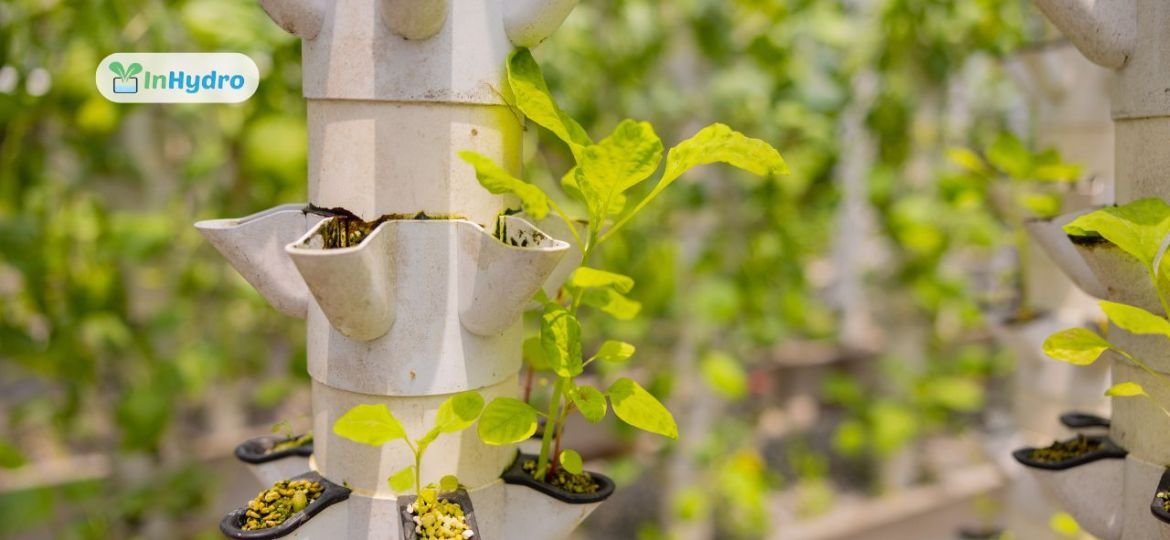
Grow Towers: Maximizing Space in Vertical Hydroponics
In the quest for sustainable and efficient agriculture, vertical hydroponic systems have become a revolutionary solution, especially in urban settings. Among the most innovative components of these systems are grow towers, which are transforming the concept of space utilization in vertical farms. Compact, efficient, and productive, grow towers are helping farmers achieve maximum output in minimal space.
This article explores how grow towers function, their benefits in hydroponics, and their role in shaping the future of urban farming.
What is a Grow Tower?
A grow tower is a vertical structure designed for cultivating plants in stacked layers using hydroponic methods. It is a critical element of vertical hydroponic systems, allowing multiple plants to grow in a small footprint. By delivering nutrients and water directly to the plant roots through a recirculating system, grow towers eliminate the need for soil and drastically reduce resource consumption.
Benefits of Grow Towers in Vertical Hydroponics
1. Efficient Space Utilization
The primary advantage of a grow tower is its ability to make the most of vertical space. In areas where land is limited, such as cities, grow towers enable the cultivation of a large number of plants in small spaces.
2. Water and Nutrient Conservation
Vertical hydroponic systems like grow towers use a closed-loop system to circulate water and nutrients. This reduces water usage by up to 90% compared to traditional farming methods, making it an eco-friendly solution for modern agriculture.
3. Higher Crop Yield
By optimizing the delivery of water, nutrients, and light, grow towers promote faster growth and higher yields. Each layer of the tower can be dedicated to a different crop, allowing farmers to diversify their harvests.
4. Ease of Maintenance
Grow towers are designed to simplify farming processes. Their vertical structure allows easy access to plants for monitoring, harvesting, and maintenance, reducing labor intensity.
5. Scalability for Urban Farming
Whether used in small home gardens or large-scale vertical farms, grow towers are highly scalable. They can be adapted to suit various farming needs, from growing leafy greens to cultivating herbs and fruits.
How Grow Towers Work
Step | Description |
1. Setup and Design | Towers are vertically arranged with planting pockets or trays for individual crops. |
2. Water Circulation | A pump circulates nutrient-rich water through the tower, reaching all plant roots evenly. |
3. Lighting | LED grow lights provide consistent light, ensuring optimal photosynthesis even in indoor setups. |
4. Plant Growth | Plants absorb nutrients directly from the water, leading to faster and healthier growth. |
5. Harvesting | Crops are harvested easily from accessible layers without disturbing other plants. |
Applications of Grow Towers
- Home Gardening: Compact grow towers allow individuals to grow fresh produce at home, even in small apartments.
- Urban Vertical Farms: Large-scale vertical farms use grow towers to maximize yield in limited urban spaces.
- Commercial Hydroponics: Farmers use grow towers for high-value crops like lettuce, herbs, and strawberries.
- Educational and Research Projects: Grow towers are increasingly used in schools and universities to teach hydroponics.
Why Choose InHydro for Grow Towers?
At InHydro, we specialize in providing cutting-edge vertical hydroponic systems tailored to modern farming needs. Our grow towers are designed with durability, efficiency, and scalability in mind, making them ideal for both small-scale and large-scale applications. Whether you’re starting a personal project or building a commercial vertical farm, InHydro offers expert solutions to help you succeed.
FAQs
Q: What crops can I grow in a grow tower?
A: Grow towers are versatile and suitable for a wide range of crops, including leafy greens (lettuce, spinach, kale), herbs (basil, mint, parsley), and fruits like strawberries.
Q: How much space does a grow tower require?
A: A single grow tower typically requires less than 1 square meter, making it ideal for small spaces.
Q: Are grow towers suitable for outdoor use?
A: Yes, grow towers can be used both indoors and outdoors, provided the environmental conditions are monitored for optimal growth.
Q: Can I use organic nutrients in a grow tower?
A: Absolutely! Organic nutrients work effectively in hydroponic systems, promoting sustainable and eco-friendly farming.
Conclusion
Grow towers are redefining the way we approach agriculture, particularly in urban areas where space and resources are limited. By integrating them into vertical hydroponic systems, farmers and hobbyists alike can achieve remarkable efficiency, sustainability, and productivity.
With InHydro’s premium grow towers and expert guidance, you can harness the full potential of modern hydroponics and take a step toward sustainable farming. Whether you’re aiming to set up a small home garden or a commercial vertical farm, InHydro is your trusted partner in innovative agriculture.

